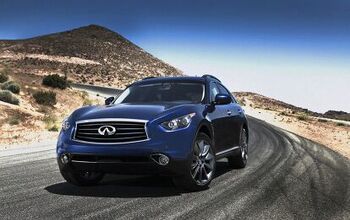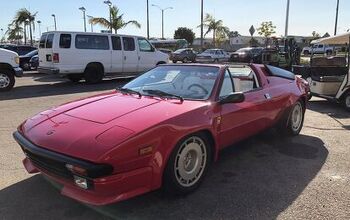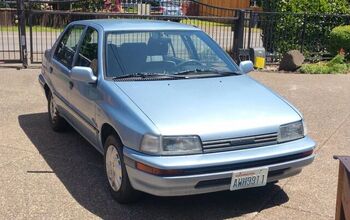Essence
Peter F. Drucker grew up in Frankfurt just as the Nazis gathered power. When Hitler was elected Chancellor, the future business guru fled for England, watching the storm clouds of centralized power in his rearview mirror. No wonder the concept of decentralization became one of Drucker’s first and more useful contributions to American business theory. Drucker and his beliefs came to prominence with the publication of "Concept of the Corporation" in 1946. Hard to believe, but the landmark work was based on 18 months Drucker spent studying General Motors.
By 1950, Drucker decided that workers were assets and the corporation was a community. He asserted that humans– not machines, numbers, paper or parts– were the heart of the company. He eventually extended the perspective out of the factory doors out to the customer. Drucker spent a lot of time and other people’s money reminding executives not to forget the customer.
The nature of any business, he argued, is to create a customer. To hunt him or her down and serve them like… um… There is no good metaphor for hunting and serving. Maybe that’s why it’s such a tough dictate to follow. But according to Drucker, follow it you must: the customer is the essence of any successful business, including automotive. Following his logic, a car is the RNA to the essential DNA of those inside. In other words, it’s the people that matter, not the car.
Ironically enough, Volkswagen is a perfect example of a company founded on this “customer as essence” philosophy. Adolf Hitler decided that his working class supporters needed a “people’s car” that could take five passengers to 62 mph for under 1000 Reich Marks. He met with Ferdinand Porsche, owner of the design house Porsche Byro. The Beetle was born. The Beetle became a runaway success and an automotive icon.
Volkswagen’s customers, however, evolved. Post-war, family sizes increased. Consumers became aware of safety and environmental considerations. Volkswagen kept pace with their customers' expectations of performance, comfort and safety by shifting from the spartan Beetle to the increasingly luxe Golf (or Rabbit, depending on your county of origin). The two models have almost nothing in common– except the people you find riding inside. VW stayed true to its middle class customers.
Many decades later, VW re-launched a "new" Beetle. The model illustrates the company's ability to understand their "essence." Rather than create another utilitarian people's car, they released a horrendously compromised package wrapped in "cute" retro-minded sheetmetal. The result appealed directly and powerfully to their existing customers' sense of nostalgia, at a price they could afford. The new Beetle was/is a value-priced fashion statement– the exact opposite of the Bug’s original intent. And a solid sales success because of it.
It seems simple enough: build a car for your customer. Some companies do this very well. As wealthy consumers have children later in life, Porsche correctly figured that a fat, 911-nosed station wagon was just what the “new traditional” Porsche customer needed to cart their dependents and lifestyle equipment. Or, if you prefer, the Cayenne was exactly what their customers' wives wanted their Porsche worshipping husbands to want to buy for them. The Chevrolet Corvette is another machine that's faithful to its maker's essence. Although no longer as affordable as it was, the 'Vette still caters to its [increasingly wealthy] customers' desire for impractical, low-slung, all-American, V8-powered sex appeal.
Volkswagen also supplies us with an excellent example of the converse of the consumer-centric theory: the Phaeton. Though superbly engineered, VW's $70k luxobarge was an answer to a question that none of their customers asked. How far from the young, middle-class family did they park that thing, anyway? By the same token, Saab customers prize nimble driving, clever design and originality. Give them a warmed-over, rebadged Chevy Trailblazer and see what happens. Nothing. Observers of the automotive scene often see an automaker's essence denied (Cadillac BLS) or essence from another planet (Chevrolet SSR). These products– if not the companies who build them– are doomed from the start.
Which is the long way of saying badge engineering is the exact polar opposite of customer engineering. A company may like to build a certain type or style of car, it may be relatively cheap to manufacture. But if the company forgets its essense (i.e. whether or not its existing customers want to pay them for the result), they won't be building cars for long. In short, the person who should be in the driver's seat of any viable car company should be the person who ends up in the driver's seat: the customer.
In 1983, Drucker wrote this epilogue: "Concept of the Corporation had an immediate impact on American business, on public service institutions, on government agencies – and none on General Motors!"
More by Michael Martineck
Latest Car Reviews
Read moreLatest Product Reviews
Read moreRecent Comments
- Cprescott Doesn't any better in red than it did in white. Looks like an even uglier Honduh Civic 2 door with a hideous front end (and that is saying something about a Honduh).
- Kwik_Shift_Pro4X Nice look, but too short.
- EBFlex Considering Ford assured us the fake lightning was profitable at under $40k, I’d imagine these new EVs will start at $20k.
- Fahrvergnugen cannot remember the last time i cared about a new bmw.
- Analoggrotto More useless articles.


































Comments
Join the conversation
Hi guys. I just got back from tearing around Auburn Hills in a 5 door GTI DSG a minute ago. they are 2007 models, so VWs site won't list them yet. emphasis still on remaining 06's. But they have been selling off the list from the factory. Haven't had one here last more than a couple days without being sold at sticker. Not bad for Detroit. And the 2.5 is a good engine. Its a far better engine than the one it replaces. VW problems here in the US are due to the beauracracy of VWAG. Remember, we have to deal with the GM of Europe, so a lot of our products, while very good, are plagued by stupid decisions in both design, marketing, and a gross misunderstanding of the american car buying market.
Now here is something fun that VW has just done in Canada. VW has taken a page out of the GM Handbook by hedging thier bets with old product while moving new product upmarket i.e the Cavalier staying on for a bit while Cobalt starts up and Venture/Montana hanging about while Uplander and Montana SV6 are introduced. With that, VW has introduced the City Golf and City Jetta! The City Golf starts at $14900 CDN and the City Jetta at $16700CDN. Yes, that is in Canadian dollars. Now, this is the base and I mean BASE (no side airbags, no air conditioning, no power mirrors etc),but if you load it up, it is only $21000 CDN approx. So, I imagine if you will, I bought my Jetta/Golf MK4 last year, paying WAY more than that. My resale value of my car, which is one of the selling points of a VW, has just gone down, since a new one is available for a LOT less than a used one. I would be a little pissed off. And, I work for a leasing company, with a lot of nice little Jettas and Golfs on our books. Save for the TDIs, our end values that we have set will be out of line now. VW could have brought out a Polo to compete with the Honda Fit, et al, but instead they decontented and undercut their Golf and Jetta values. On the face of it, its a lot of value for money, but in reality, they are regurgitating thier old product for North America while everyone else gets the cool stuff. Here is the link http://www.vw.ca/vwca/models/build/0,2264,154,00.html and you can see the cheap car I just built.